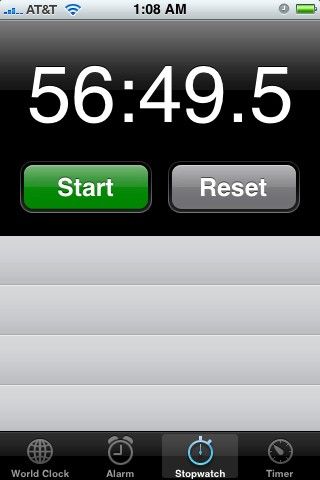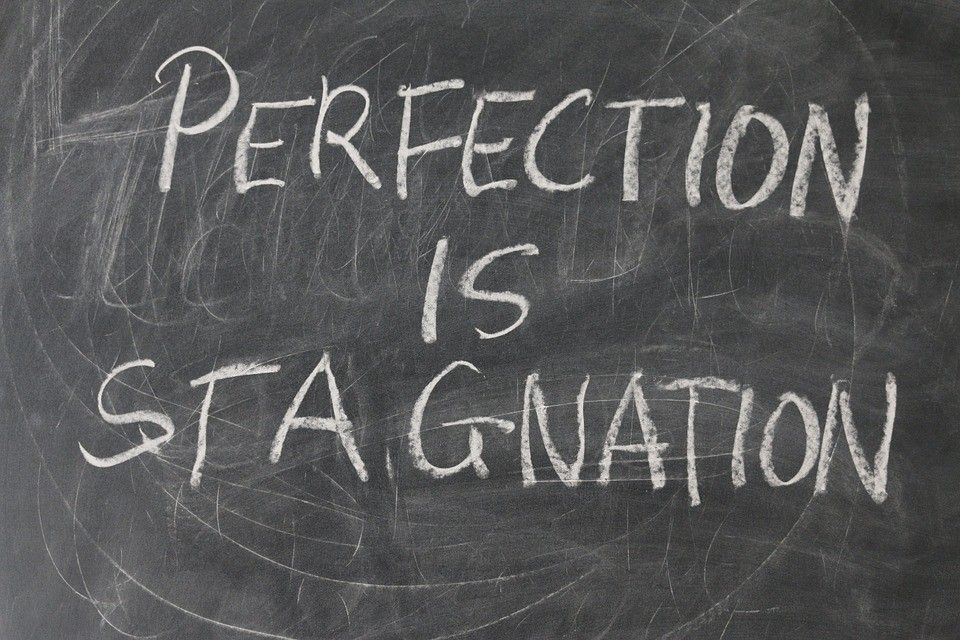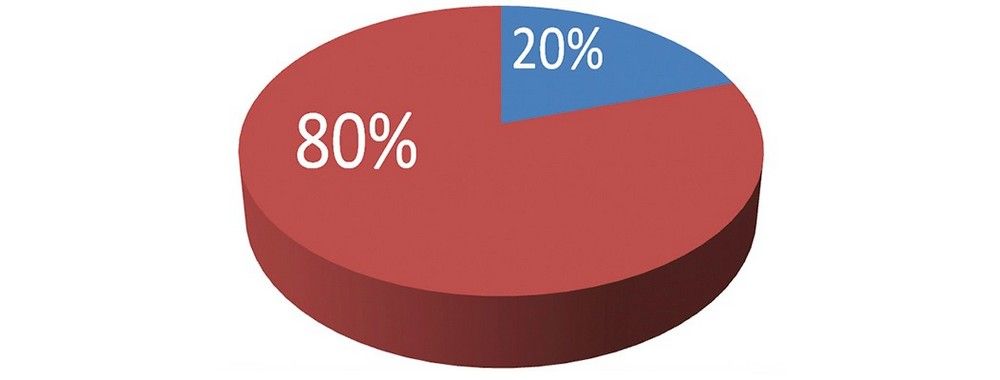Eighty percent of what we do is pretty much pointless. Twenty percent of our efforts yield 80% of the results. The Pareto Principle is the idea that 80% of our output comes from 20% of our efforts. It’s a measure of where we can devote our efforts so as to increase our productivity and performance. Explore where your 20% lies—and become more productive.
Most of us work five days a week, but in four of those days—we’re only creating 20% of what we do in the week; there’s a single day buried in there when we create 80% of our output for that week. What if we could track that day down and make the rest of the week more like that day? According to the Pareto Principle you can do just that.
This principle is named after the controversial Italian economist, Vilfredo Pareto (1848–1923). Pareto used the principle to reveal an uneven but predictable distribution of wealth in society—80% of the wealth and income was produced and possessed by 20% of the population. Pareto explained how 80% of his garden peas were produced by only 20% of peapods. But Pareto went further. He asserted that his principle could be applied everywhere.
Pareto’s Distribution, Pareto’s Law or the 80/20 Principle was first published in his seminal work, “Cours d’economie politique” (1897).
Let’s summarize the principle:
- 80% of outputs come from only 20% of the inputs.
- 80% of all consequences come from only 20% of causes.
- 80% of your results come from only 20% of your effort and time.
- 80% of your company’s profits come from only 20% of the products and customers.
If you apply the principle to your own frustrations—whatever they may be—you’ll notice that:
Best practice: How to Get Started Using the Pareto Principle
You can examine your frustrations and issues using the Pareto Principle if you ask these questions:
- Which 20% of your current efforts are resulting in 80% of your desired outcomes and happiness?
- Which 20% of your current efforts are causing 80% of your problems and unhappiness?
We don’t mean simple guesswork. Instead, create a specific time schedule to get an overview of how you actually spend your minutes and hours in an average working week.
Now, go over each task you carry out and the time spent on each—and use the two questions above to consider these actions in context.

Author/Copyright holder: jm3 on Flickr. Copyright terms and licence: CC BY-SA 2.0
Time—it’s a continuum and a measurement. When you measure how long it takes for what you’re doing to produce which kinds of results, you’re making a humungous step towards success.
It may take some time to process. Yes, it can be painful to discover how much of your time is wasted on things that aren’t productive and which don’t make you happy. That’s OK. Let’s think about it this way, though. While you can’t reach back and snatch your lost hours from the past’s clutches, the time you will be able to save—by applying this process—will put more life into the hours of your future.
Your goal when using the Pareto Principle is twofold:
- Highlight your inefficiencies so you can eliminate them.
- Highlight your strengths so you can use them to create more value.
In some cases, using the Pareto Principle will help you decide that some of your objectives offer such minor contributions to your overall goal that you can safely ignore them.
For example, you might come to realise that answering emails for four hours a day is wasteful—that you can reduce the time spent on that task to half an hour a day and cut back on the length of your responses. It might be necessary to answer emails, but it’s not so important that it should take up 50% of the working day.
Instead, you should identify and focus your energy on the 20% of activities which can—in fact—help speed you towards your goals. The Pareto Principle reflects the distinction between efficiency and effectiveness and can help you prioritize and focus on what really matters to you.
As Peter Drucker, the management consultant, says, “Efficiency is doing things right; effectiveness is doing the right things.”
There’s a Time and a Place to Apply and Advocate for Perfectionism
You may find out that you’re spending 80% of your time preparing for an important presentation which can lead to a big sale for your company. If that sale is crucial for your company and the company is aiming to get the deal wrapped up, then you’re doing the right thing.
You should indeed spend a lot of time and work effectively towards this goal. Spending a lot of time on one task doesn’t mean that the effort is misplaced—quite the contrary, in fact. We’re strong advocates for perfectionism and hard work if it is applied it to the right tasks—i.e., those which bring you closer to a specific and important goal. However, you should only focus on productive and significant goals:
“Workaholics don't actually accomplish more than nonworkaholics. They may claim to be perfectionists, but that just means they're wasting time fixating on inconsequential details instead of moving on to the next task.”
― David Heinemeier Hansson, Rework
 Author/Copyright holder: Pixabay. Copyright terms and licence: CC0
Author/Copyright holder: Pixabay. Copyright terms and licence: CC0
Perfectionism may sound too good to be true—and it often is more about keeping a dream back than someone performing meaningful activities and being satisfied with great, if imperfect, results.
There’s a Time and a Place to Apply and Advocate for Anti-Perfectionism
Sometimes, work just needs to get done. Sometimes, a task is necessary to perform but, let’s say, it’s not part of the 20% of work which makes 80% of a freelance designer’s profit. Freelancers will have a few bureaucratic issues to handle, for example. For instance, they have to make sure that they’re paying their bills for renting their office space and for their internet connection.
It might be that it’s not worth hiring a staff member to handle this stuff—but it still needs doing. In such cases:
“You're better off with a kick-ass half than a half-assed whole.”
― David Heinemeier Hansson, Rework
“Find a judo solution, one that delivers maximum efficiency with minimum effort. When good enough gets the job done, go for it.”
― Jason Fried, Rework
In this case, the freelancer should just sit down and get the boring bureaucratic stuff done as fast as possible once every month, and then—afterwards—he’ll be free to focus on what really matters.
 Author/Copyright holder: Corinna Duron. Copyright terms and licence: Public Domain.
Author/Copyright holder: Corinna Duron. Copyright terms and licence: Public Domain.
Considering that one fifth of our activities can seriously deliver the most rewarding results is powerful food for thought. The question is, which activities?
The Takeaway
The Pareto Principle is the idea that 20% of our efforts yield 80% of the rewards. It’s a principle which can be applied to any area of business; design, sales, HR, etc. It can also be applied to our real lives; which 20% of your leisure time reveals 80% of the happiness?
If you can identify the 20% that creates the rewards, you can spend more time doing those things to create greater rewards. You can also cut back, a lot, on the 80% of the time you waste creating only 20% of the rewards.
References & Where to Learn More
Hero Image: Author/Copyright holder: Atti Vitoso. Copyright terms and licence: CC BY 2.0
Jason Fried and David Heinemeier Hansson, Rework, 2010
Timothy Ferriss, The 4-Hour Work Week, 2009



